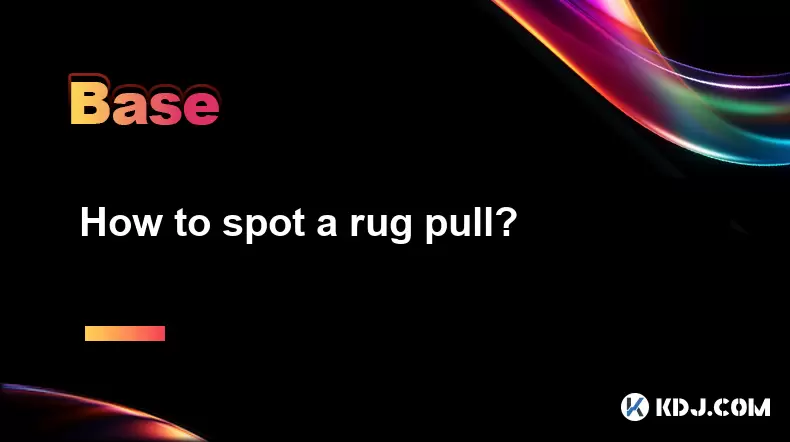-
 Bitcoin
Bitcoin $116700
0.24% -
 Ethereum
Ethereum $3973
4.34% -
 XRP
XRP $3.283
7.68% -
 Tether USDt
Tether USDt $1.000
0.01% -
 BNB
BNB $789.8
2.27% -
 Solana
Solana $176.2
3.31% -
 USDC
USDC $0.9999
0.00% -
 Dogecoin
Dogecoin $0.2238
5.14% -
 TRON
TRON $0.3389
-0.51% -
 Cardano
Cardano $0.7907
4.03% -
 Stellar
Stellar $0.4527
10.02% -
 Hyperliquid
Hyperliquid $41.07
4.27% -
 Sui
Sui $3.794
1.77% -
 Chainlink
Chainlink $19.49
10.40% -
 Bitcoin Cash
Bitcoin Cash $580.9
0.74% -
 Hedera
Hedera $0.2617
4.32% -
 Avalanche
Avalanche $23.41
3.67% -
 Ethena USDe
Ethena USDe $1.001
-0.03% -
 Litecoin
Litecoin $122.4
1.38% -
 Toncoin
Toncoin $3.364
1.49% -
 UNUS SED LEO
UNUS SED LEO $8.988
0.37% -
 Shiba Inu
Shiba Inu $0.00001295
2.82% -
 Uniswap
Uniswap $10.62
5.75% -
 Polkadot
Polkadot $3.922
4.46% -
 Dai
Dai $1.000
0.01% -
 Bitget Token
Bitget Token $4.494
2.15% -
 Monero
Monero $268.0
-1.30% -
 Cronos
Cronos $0.1523
3.68% -
 Pepe
Pepe $0.00001127
4.43% -
 Aave
Aave $285.4
4.85%
What is cold storage and hot storage in a cryptocurrency?
Cryptocurrency storage options include secure cold storage (hardware or paper wallets) and convenient but riskier hot storage (software wallets or exchanges). The best choice depends on your transaction frequency and risk tolerance; high-value holdings generally warrant cold storage.
Mar 15, 2025 at 05:55 pm

Key Points:
- Cold storage: Offline storage methods for cryptocurrencies, prioritizing security over accessibility. This minimizes the risk of hacking and theft. Examples include hardware wallets and paper wallets.
- Hot storage: Online storage methods, prioritizing accessibility over security. This offers convenience but increases vulnerability to hacking and theft. Examples include software wallets and exchanges.
- Choosing between cold and hot storage: Depends on individual needs, balancing security concerns with the frequency of transactions. High-value holdings generally benefit from cold storage, while smaller amounts or frequent trading might utilize hot storage.
What is Cold Storage in Cryptocurrency?
Cold storage refers to methods of storing cryptocurrencies offline, completely disconnected from the internet. This significantly reduces the risk of theft through hacking or malware. The primary goal is enhanced security. Various methods exist, each with its own level of security and user-friendliness. The most popular options include hardware wallets and paper wallets. Hardware wallets are physical devices resembling USB drives, while paper wallets involve printing your private keys and public addresses onto paper.
Different Types of Cold Storage:
- Hardware Wallets: These are dedicated devices designed specifically for storing cryptocurrency private keys. They offer a high level of security due to their offline nature and often include additional security features like PIN codes and seed phrase backups. Examples include Ledger and Trezor.
- Paper Wallets: These are arguably the simplest form of cold storage. Your public and private keys are printed and stored offline. While simple, they are vulnerable to physical damage or loss, and require careful handling and storage.
Security Considerations for Cold Storage:
Properly securing your cold storage is crucial. This includes safeguarding your seed phrase (a critical recovery key), storing your paper wallets in a safe and secure location, and regularly backing up your hardware wallet's seed phrase. Never share your seed phrase with anyone. Remember, losing your seed phrase means losing access to your cryptocurrency.
What is Hot Storage in Cryptocurrency?
Hot storage, in contrast to cold storage, involves storing cryptocurrencies online, connected to the internet. This offers ease of access and convenience for frequent transactions. However, this increased accessibility comes at the cost of heightened security risks. Hot storage is susceptible to hacking, malware, and phishing attacks. Examples include software wallets and cryptocurrency exchanges.
Different Types of Hot Storage:
- Software Wallets: These are digital wallets installed on your computer, smartphone, or tablet. They provide easy access to your funds but are more vulnerable to online threats. Different software wallets offer varying levels of security.
- Exchanges: Cryptocurrency exchanges are online platforms where you can buy, sell, and trade cryptocurrencies. While convenient, storing your cryptocurrency on an exchange is considered relatively insecure due to the exchange's exposure to hacking and other vulnerabilities.
Security Considerations for Hot Storage:
When using hot storage, it's vital to implement robust security measures. This includes using strong, unique passwords, enabling two-factor authentication (2FA), keeping your software updated, and being wary of phishing scams. Regularly review your transaction history for any suspicious activity. Avoid storing large amounts of cryptocurrency on exchanges for extended periods.
Choosing Between Cold and Hot Storage:
The decision of whether to use cold or hot storage depends on your individual needs and risk tolerance. For large amounts of cryptocurrency held for long-term investment, cold storage is generally recommended due to its superior security. However, if you frequently trade or need quick access to your funds, hot storage might be more practical, despite the increased risk.
Frequently Asked Questions:
Q: What is a seed phrase? A: A seed phrase is a list of words that acts as a master key to your cryptocurrency wallet. It allows you to recover your funds if you lose access to your wallet. Keep it safe and secret.
Q: Is it safe to store cryptocurrency on an exchange? A: No, storing large amounts of cryptocurrency on an exchange is generally not recommended due to the increased risk of hacking and theft. Exchanges are frequent targets for cyberattacks.
Q: What is the best type of cold storage? A: There's no single "best" type. Hardware wallets offer the highest level of security, but paper wallets are a simpler, albeit less secure, option. The best choice depends on your technical skills and risk tolerance.
Q: Can I use both cold and hot storage? A: Yes, many users utilize a combination of cold and hot storage. They might keep a smaller amount in a hot wallet for frequent transactions while storing the bulk of their holdings in cold storage.
Q: What should I do if my hardware wallet is lost or damaged? A: If you've properly backed up your seed phrase, you can restore your wallet to a new device. Without the seed phrase, your funds are irretrievably lost.
Q: What are the risks of hot storage? A: Hot storage significantly increases your vulnerability to hacking, malware, phishing attacks, and exchange failures. This means you're more likely to lose your cryptocurrency.
Q: How can I protect my seed phrase? A: Never share your seed phrase with anyone. Store it in a safe, secure location, ideally offline and separated into multiple backups. Consider using a memory device designed for secure storage.
Disclaimer:info@kdj.com
The information provided is not trading advice. kdj.com does not assume any responsibility for any investments made based on the information provided in this article. Cryptocurrencies are highly volatile and it is highly recommended that you invest with caution after thorough research!
If you believe that the content used on this website infringes your copyright, please contact us immediately (info@kdj.com) and we will delete it promptly.
- Punisher Coin: The Altcoin Ready to Punish Your Portfolio with Gains?
- 2025-08-08 22:50:16
- Mutuum Finance, Bitcoin Whales, and Binance: Decoding the Crypto Currents
- 2025-08-08 22:30:11
- Bitcoin, Crypto Market, Volatility: Riding the Rollercoaster in NYC Style
- 2025-08-08 22:50:16
- HTX Copy Trading Extravaganza: Rewards and Opportunities for Traders
- 2025-08-08 23:30:12
- SPX6900 Pumps & TOKEN6900 Presale: Month Growth Mania!
- 2025-08-08 23:30:12
- Dogwifhat, Beanie, and $800,000: A Meme Worth Millions?
- 2025-08-08 23:35:12
Related knowledge

Can you reuse a crypto wallet address?
Aug 08,2025 at 03:49pm
Understanding Wallet Addresses in CryptocurrencyA crypto wallet address is a unique identifier used to send and receive digital assets on a blockchain...

Are meme coins a good investment?
Aug 08,2025 at 11:36pm
Understanding Meme Coins and Their OriginsMeme coins are a category of cryptocurrencies that originated from internet humor or viral trends rather tha...

How are flash loans used?
Aug 08,2025 at 01:08pm
Understanding Flash Loans in Decentralized FinanceFlash loans are a unique innovation within the decentralized finance (DeFi) ecosystem, allowing user...

How to spot a rug pull?
Aug 08,2025 at 11:21pm
Understanding the Concept of a Rug PullA rug pull is a type of scam prevalent in the decentralized finance (DeFi) and cryptocurrency space where devel...

What are common crypto trading strategies?
Aug 08,2025 at 12:42pm
Understanding Trend Following in Crypto TradingTrend following is one of the most widely adopted crypto trading strategies due to its simplicity and a...

How to read a crypto chart?
Aug 08,2025 at 10:35am
Understanding the Basics of a Crypto ChartA crypto chart is a visual representation of the price movements of a cryptocurrency over time. These charts...

Can you reuse a crypto wallet address?
Aug 08,2025 at 03:49pm
Understanding Wallet Addresses in CryptocurrencyA crypto wallet address is a unique identifier used to send and receive digital assets on a blockchain...

Are meme coins a good investment?
Aug 08,2025 at 11:36pm
Understanding Meme Coins and Their OriginsMeme coins are a category of cryptocurrencies that originated from internet humor or viral trends rather tha...

How are flash loans used?
Aug 08,2025 at 01:08pm
Understanding Flash Loans in Decentralized FinanceFlash loans are a unique innovation within the decentralized finance (DeFi) ecosystem, allowing user...

How to spot a rug pull?
Aug 08,2025 at 11:21pm
Understanding the Concept of a Rug PullA rug pull is a type of scam prevalent in the decentralized finance (DeFi) and cryptocurrency space where devel...

What are common crypto trading strategies?
Aug 08,2025 at 12:42pm
Understanding Trend Following in Crypto TradingTrend following is one of the most widely adopted crypto trading strategies due to its simplicity and a...

How to read a crypto chart?
Aug 08,2025 at 10:35am
Understanding the Basics of a Crypto ChartA crypto chart is a visual representation of the price movements of a cryptocurrency over time. These charts...
See all articles

























































































